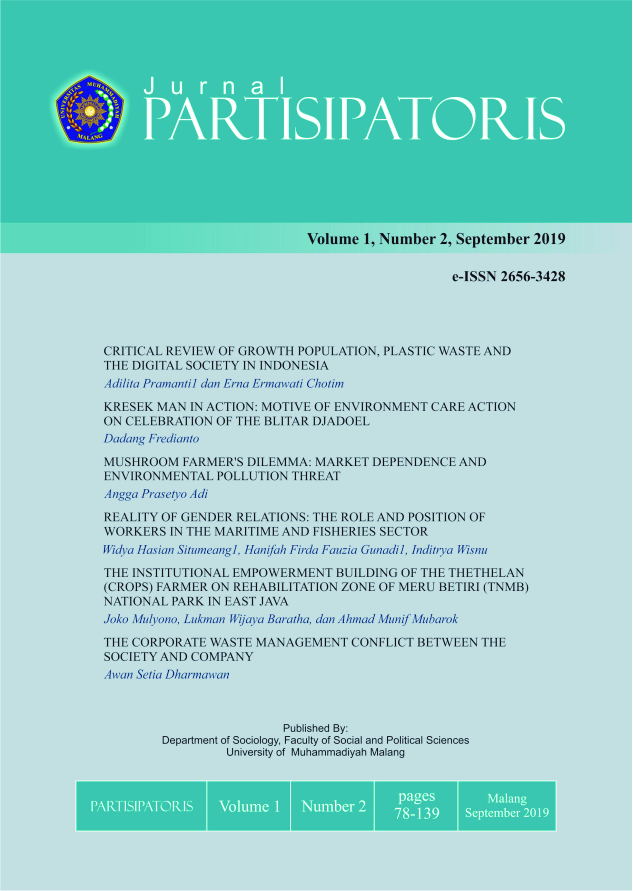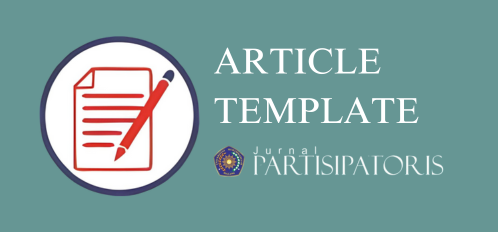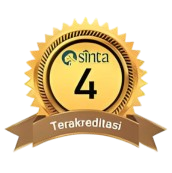THE CORPORATE WASTE MANAGEMENT CONFLICT BETWEEN THE SOCIETY AND COMPANY
DOI:
https://doi.org/10.22219/jp.v1i2.8619Abstract
Conflict is an attempt to achieve a certain value, status, and authority for a specific
benefit as well as to defeat the opponent. The backgrounds of the study were the
cause of conflict between the society and the corporate, the form of conflict between
the society and the corporate, and the conflict resolution model. This study aims
at finding out what caused the conflict between the corporate and the community
around Badek river area, the types of conflict occurred, and conflict resolution
models. This study applies the qualitative approach and is in the form of descriptive
study. This study was conducted in Malang, the urban village of Sukun, Ciptomulyo
sub-district. This study used purposive sampling technique to determine the subject
of the study. Data collecting technique was by the observation, interview, and
documentation. The theory employed in this study is the theory of conflict from Ralf
Dahrendorf. The result of the study shows that the conflict between society and
corporate arises because of the company’s production waste pollutes the river in
the environment where the community lives. The forms of conflict exist are realistic,
in-group, open conflict, conflict among different classes, conflict of interest; the
conflict resolution model is by using mediation with a compensation mechanism to
achieve a win-win solution.
Downloads
Downloads
Published
How to Cite
Issue
Section
License
Authors who publish with Jurnal Partisipatoris agree to the following terms:
- For all articles published in the Jurnal partisipatoris, copyright is retained by the authors. Authors give permission to the publisher to announce the work with conditions. When the manuscript is accepted for publication, the authors agree to the automatic transfer of non-exclusive publishing rights to the publisher.
- Authors retain copyright and grant the journal right of first publication with the work simultaneously licensed under a Creative Commons Attribution-ShareAlike 4.0 International License that allows others to share the work with an acknowledgment of the work's authorship and initial publication in this journal.
- Authors are able to enter into separate, additional contractual arrangements for the non-exclusive distribution of the journal's published version of the work (e.g., post it to an institutional repository or publish it in a book), with an acknowledgment of its initial publication in this journal.
- Authors are permitted and encouraged to post their work online (e.g., in institutional repositories or on their website) prior to and during the submission process, as it can lead to productive exchanges, as well as earlier and greater citation of published work (See The Effect of Open Access).












